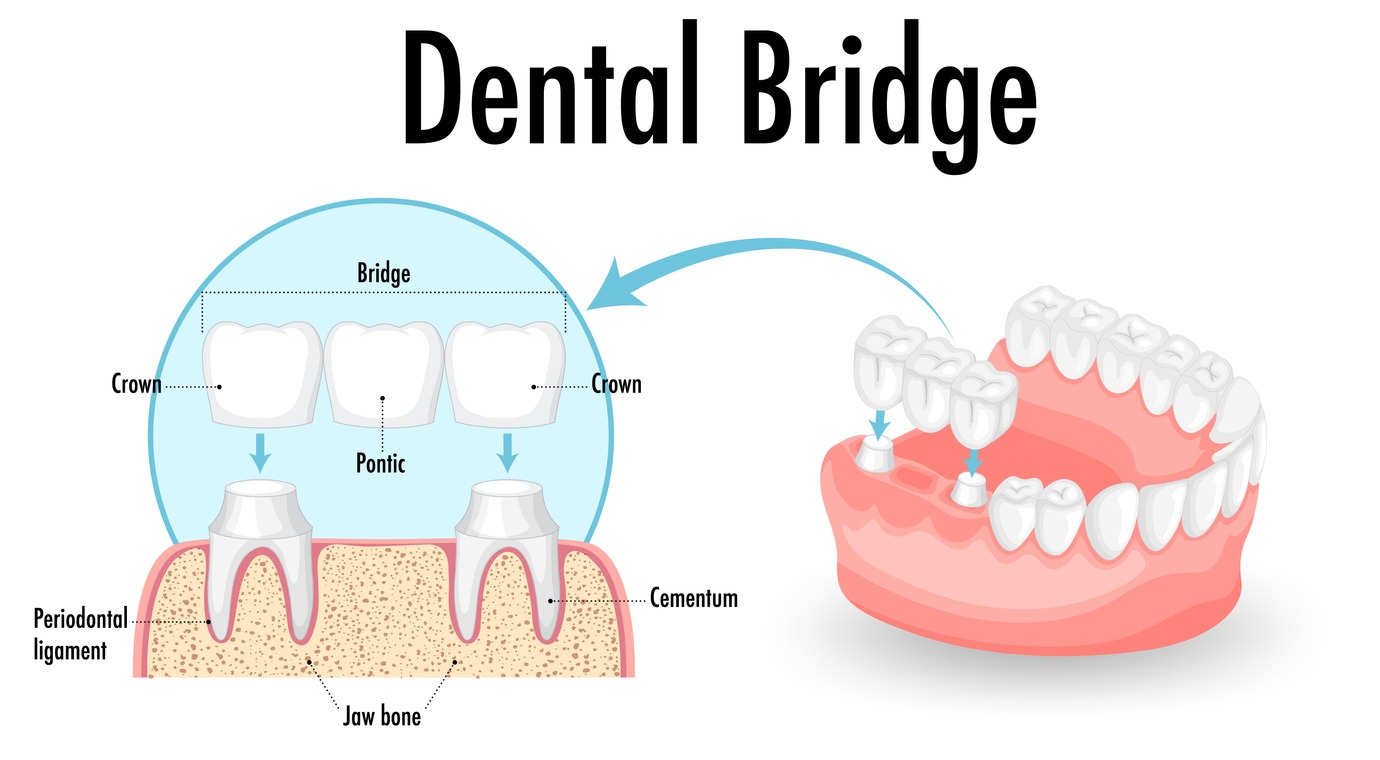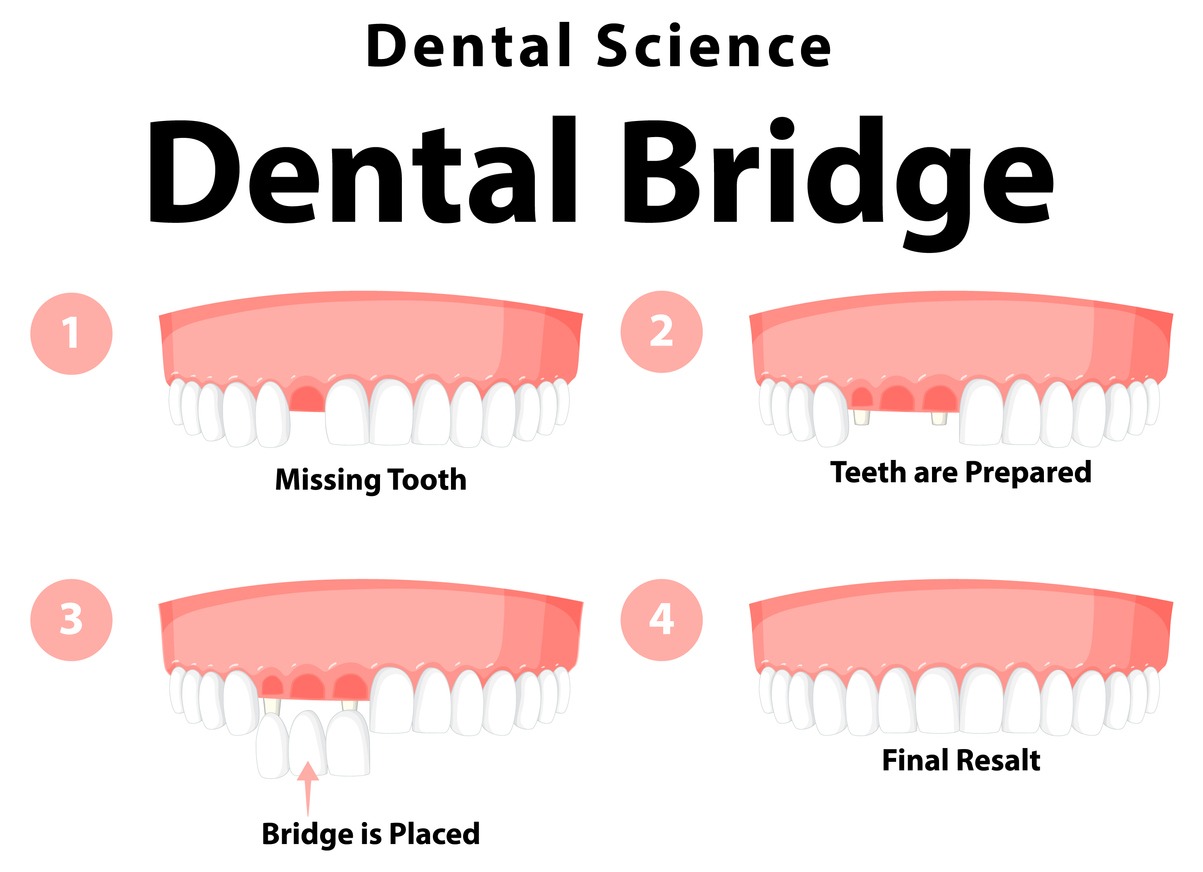In the realm of restorative dentistry, dental bridges stand as stalwart solutions for individuals grappling with the challenges posed by missing teeth. This article endeavors to unravel the intricacies of dental bridges, shedding light on their types, components, benefits, and the comprehensive process involved in acquiring these indispensable dental prosthetics.
Introduction to Dental Bridges
A dental bridge is a prosthetic apparatus meticulously crafted to span the void left by one or more missing teeth. At its core, a dental bridge comprises two fundamental components: the pontic, an artificial tooth that fills the vacancy, and the abutments, typically dental crowns, which serve as anchors affixed to the adjacent natural teeth. The amalgamation of these elements is designed to seamlessly integrate with the existing dental landscape, ensuring both functionality and aesthetic harmony.
Diverse Types of Dental Bridges
Traditional Dental Bridges – The traditional dental bridge reigns supreme as the most prevalent type, featuring a pontic anchored by dental crowns on each side. These crowns are securely cemented onto the natural teeth adjacent to the gap, providing steadfast stability and support.
Cantilever Bridges – In scenarios where only one neighboring tooth is available for support, the cantilever bridge emerges as a pragmatic choice. This variant involves affixing the pontic to a solitary adjacent tooth, negating the need for dual anchor points.
Maryland Bridges – Also recognized as resin-bonded bridges, the Maryland variant employs a metal or porcelain framework equipped with wings on either side. These wings are meticulously bonded to the rear surfaces of the adjacent teeth, obviating the necessity for crowns. Maryland bridges are often deployed for the replacement of front teeth.
Implant-Supported Bridges – Harnessing the power of dental implants surgically embedded in the jawbone, implant-supported bridges represent the pinnacle of stability. These bridges eschew reliance on adjacent natural teeth, providing a durable and reliable solution for tooth replacement.
The Anatomy of a Dental Bridge
Pontic – The pontic, the heart of the dental bridge, is the artificial tooth meticulously fashioned to emulate the appearance and functionality of the missing natural tooth.
Abutments – Serving as the bedrock of stability, abutments are structures—often dental crowns—that anchor the bridge to the adjacent natural teeth, ensuring a secure and resilient foundation.
Framework – In the case of Maryland bridges, a metal or porcelain framework takes center stage, supporting both the pontic and the wings that secure the bridge in place.
The Virtues of Dental Bridges
Aesthetic Enhancement – Dental bridges bestow a cosmetic boon, harmonizing seamlessly with the natural dentition and restoring a symmetrical and visually pleasing smile.
Functional Restoration – Beyond aesthetic considerations, dental bridges play a pivotal role in restoring optimal functionality to the oral cavity. They enable efficient chewing and articulation, mitigating the challenges posed by missing teeth.
Oral Health Preservation – By bridging the gaps left by missing teeth, dental bridges contribute to the preservation of overall oral health. They prevent the misalignment of surrounding teeth and stave off potential oral health complications.
Durability – When subjected to conscientious care, dental bridges exhibit remarkable durability, standing the test of time and providing a sustained and reliable solution for tooth replacement.
How to Pick the Right Dental Bridge Option
The process of acquiring a dental bridge entails a series of meticulous steps, each contributing to the customized and precise fit of the prosthetic:
Consultation and Examination – Commencing with a comprehensive consultation, the dentist embarks on an exhaustive examination of the patient’s oral health. This pivotal step serves as the foundation for tailoring a bridge that addresses the specific needs of the individual.
Tooth Preparation – For traditional bridges, the adjacent teeth earmarked as abutments undergo a process of careful preparation. This involves the removal of a minute amount of enamel to create the ideal substrate for the subsequent placement of crowns.
Impression – A precise impression of the prepared teeth is meticulously captured. This serves as the blueprint for the fabrication of a bespoke dental bridge that aligns seamlessly with the patient’s unique dental architecture.
Temporary Bridge – During the interim period while the permanent bridge takes shape, a temporary bridge is artfully positioned. This temporary fixture safeguards the exposed teeth, preserving their integrity until the final bridge is ready for installation.
Bridge Placement: – Upon the completion of the fabrication process, the permanent bridge undergoes a meticulous fitting and adjustment process. This ensures an impeccable fit and optimal functionality before the bridge is permanently cemented into its designated position.
Conclusion:
In the vast landscape of restorative dentistry, dental bridges emerge as stalwart companions, bridging the void left by missing teeth and ushering in a renewed era of aesthetic harmony and functional prowess. With an array of bridge types catering to diverse needs and advancements in dental technology, individuals are empowered to make informed choices that align with their preferences and oral health requirements. A collaborative journey with a knowledgeable dentist lays the groundwork for a healthy and radiant smile, underpinned by the enduring support of a meticulously crafted dental bridge.


